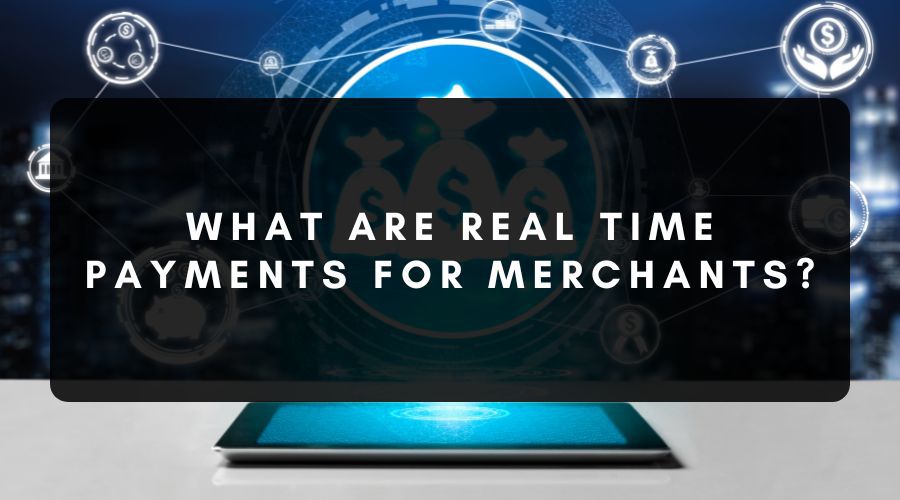What Are Real Time Payments for Merchants?

Are Real Time Payments (RTPs) the future of digital commerce and cash flow management? If you operate as a merchant, you’ve probably at least heard of RTPs and the benefits that they offer. But you might be less knowledgeable about how to access these types of payments and whether the benefits actually outweigh the drawbacks.
What Are Real Time Payments?
Real-time payments—sometimes referred to as instant payments, faster payments, or immediate payments—are electronic fund transfers that move money from one bank account to another almost instantaneously. As soon as the transaction is placed, it passes through a secure payment gateway and is received by the payee. There is no hold or delay on the payment to ensure that it clears. Real-time payments rails operate 24 hours a day, 7 days a week, 365 days a year,
Real-time digital payments are facilitated between two bank accounts. Depending on the type of transaction, the money may go from a customer’s bank account to a business’s bank account (or merchant account), or from a merchant account to a business bank account. The big differentiator is that the money received can be accessed in seconds—not days.
Japan’s Zengin system, arguably the first real-time payment network, has been around since 1973. Switzerland unveiled the second major real-time payments solution in 1987. Today, real-time payment networks are available on six continents and in over 70 countries. In the UK, we have the Faster Payment System. In the United States, real-time payments are typically processed through The Clearing House.
Variations of Real Time Payment Systems
Although the term “Real Time Payments” refers to a specific type of infrastructure, the phrase is more broadly used to refer to any type of payment transaction where the funds are available instantaneously. The term is often associated with peer-to-peer money transfer apps, which themselves sometimes rely on a Real Time Payments network to facilitate rapid payments.
When it comes to merchant services, the term is used less commonly. That’s not to say that real-time transactions aren’t available from a merchant provider. It’s just that the very purpose of a merchant provider is to process transactions quickly so that business operations can move seamlessly and without delay.
In other words, a typical merchant transaction—whereby a payment is sent through a payment gateway and processed by a receiving bank—is not processed in real time. The transaction information moves almost instantaneously through the payment gateway, but then the bank must still process and clear the transaction in a traditional manner. The merchant provider assumes a certain level of risk by greenlighting the transaction as soon as it’s requested (assuming that no fraud is detected) so that the merchant can provide prompt service to the customer. This is one of the reasons why merchant services are so invaluable for any business that conducts digital transactions—especially internationally.
The Downsides of RTP for Merchants
While there are certainly benefits to immediate payment transactions, there are also a number of downsides for merchants.
Fraud
It’s harder for financial institutions to catch fraud when dealing with real-time payments. RTP providers do have fraud prevention tools in place, but it’s easy for some types of fraud to slip through the cracks when payments are being approved instantly. A good merchant provider will have fraud prevention tools for businesses that can weed out fraud more effectively, but not all of these tools work instantaneously. It still pays to have transactions monitored and vetted.
Cost
An RTP network presents an added cost to merchants. With a real-time payments provider, you have to pay for an additional service on top of your typical merchant services—even though the merchant provider already works around the clock to ensure seamless end-to-end communication and prevent transaction delays from occurring.
Technology
Real-time payments technologies are still being fine-tuned. Though the infrastructure has come a long way in recent years, there’s still a lot to be done in order to make real-time payments affordable and secure for the merchant. We will get there. Here in the UK, for instance, new security innovations like Confirmation of Payee are reducing some of the security concerns and making RTP safer for all. But there’s still work to be done.
Relevance
E-wallet technologies are already leading the charge on RTP. In a majority of European nations, e-wallets have replaced traditional debit and credit card transactions as the preferred payment method among consumers. But real-time processing is already built into these technologies to a great extent. As more and more consumers rely on digital wallet solutions, there’s less of a need to invest in streamlining traditional payment methods.
Are Real Time Payments Right for Merchants?
If you’re a merchant and you’re concerned that your store doesn’t support real-time payments, you can rest easy. Your merchant provider is there to ensure that transactions are already processed in real time (even if the bank ultimately needs to sign off on them), and chances are, you already have access to instantaneous payment solutions whether you realise it or not.
The important thing is to ensure that your payment solutions are secure, streamlined for the customer, and capable of reaching people across different borders, currencies, and payment methods.
